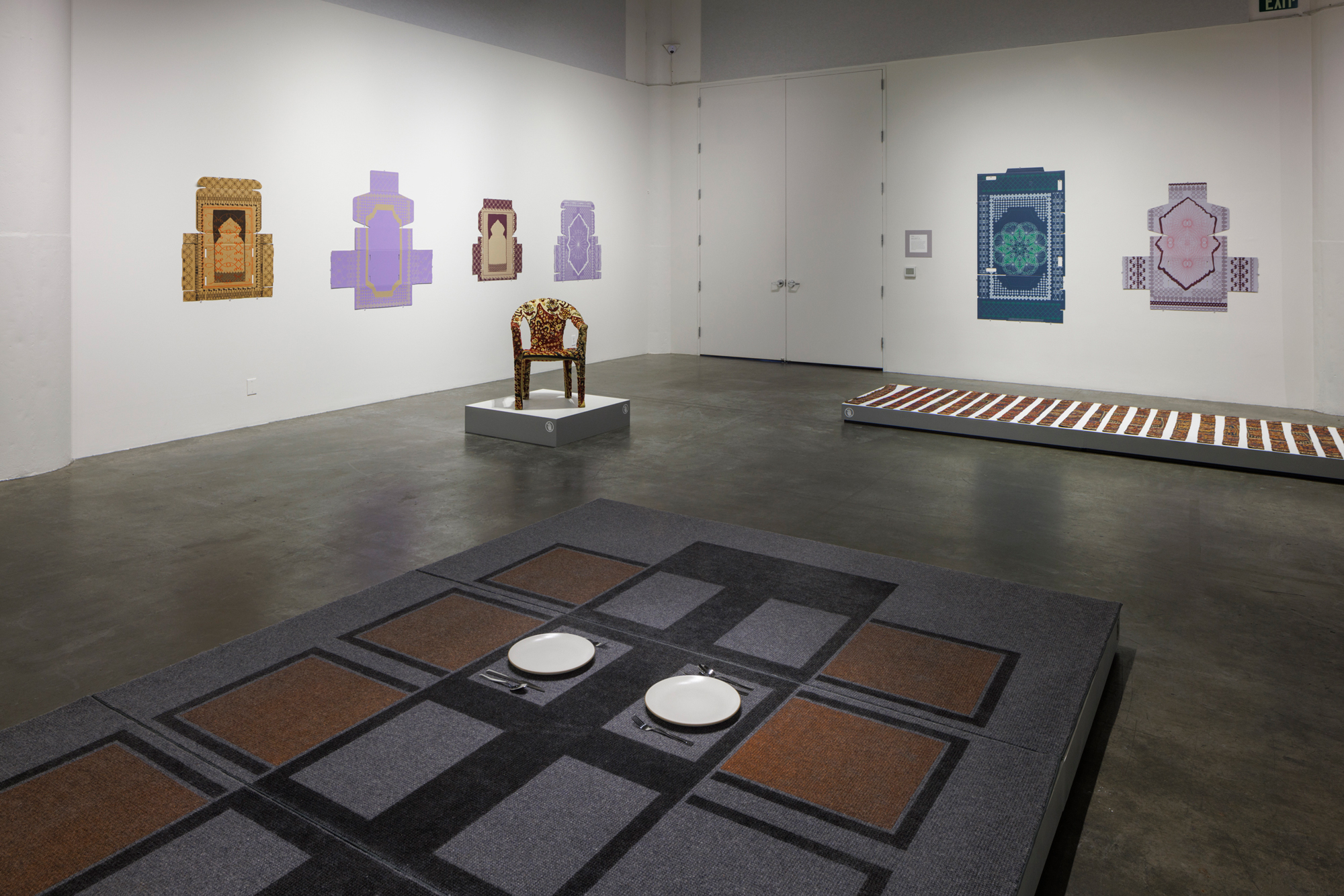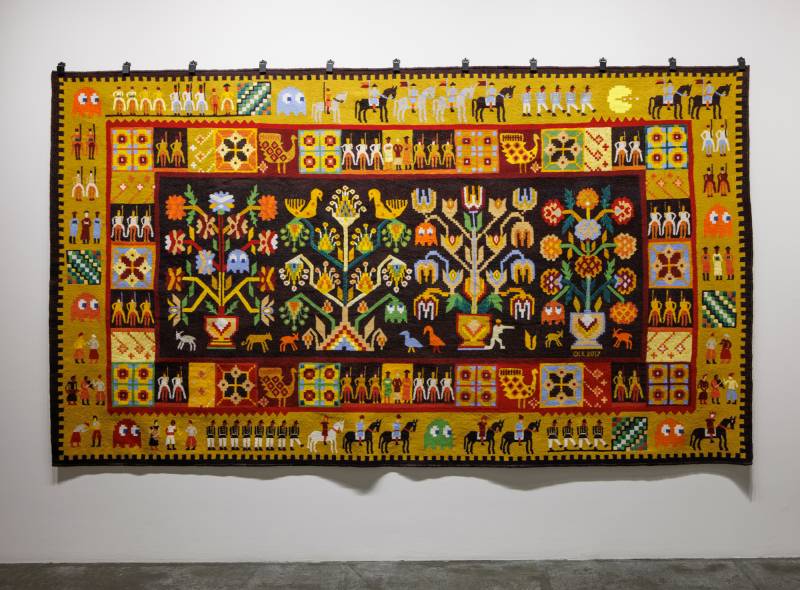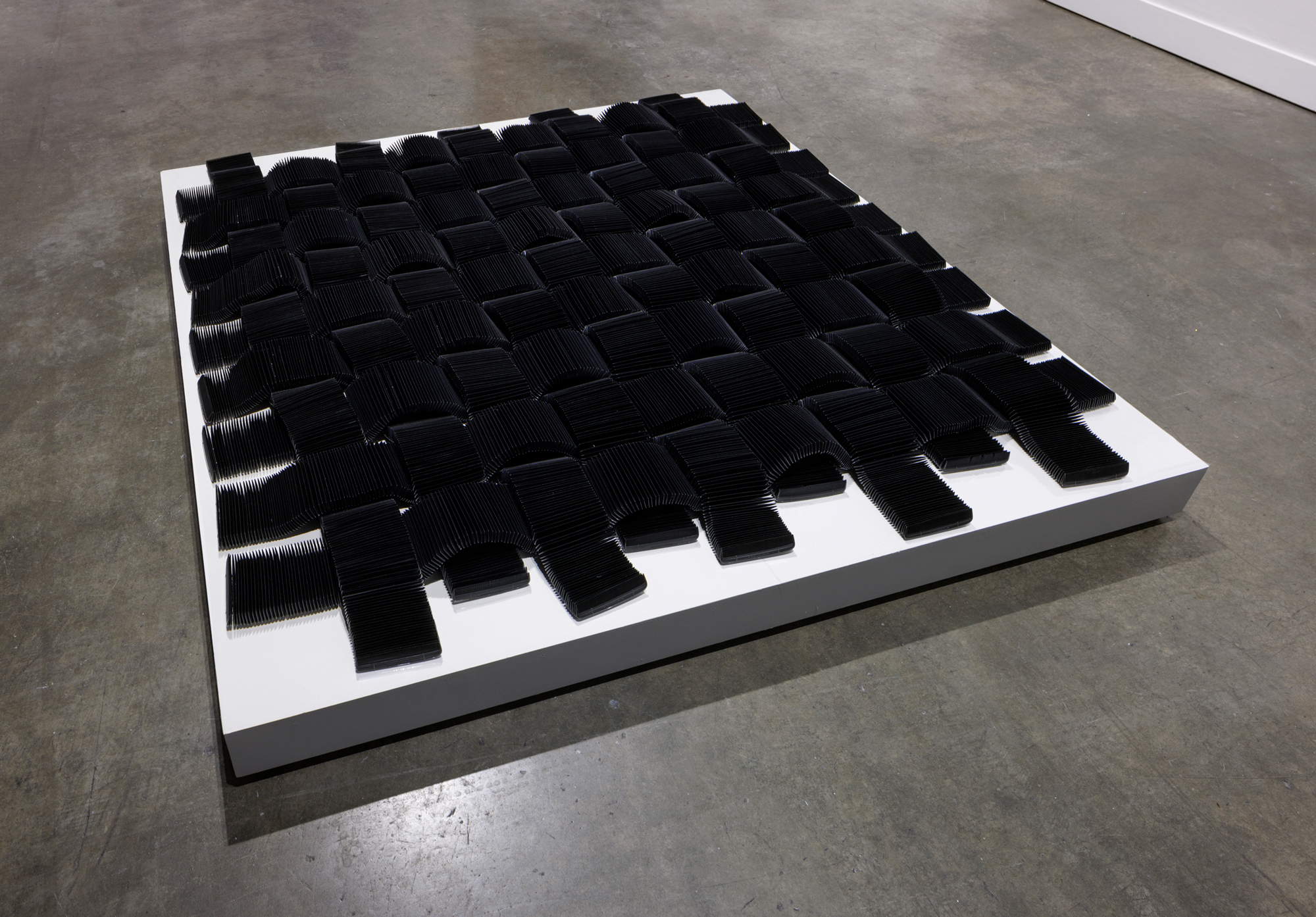The one downside of the exhibition RugLife, on view through April 20 at the Museum of Craft and Design, is that you cannot touch the art. In a group show of technicolor textiles, lusciously thick piles and sculptural weavings, the urge to run one’s hands over the wall-hanging rugs, especially, is difficult to contain. (I don’t think I’m the only one starved for texture in a world of slick surfaces and shiny screens.)
The truth is there’s plenty more going on in RugLife than sensory evocation. The show, guest curated by Ginger Gregg Duggan and Judith Hoos Fox, features the work of 14 contemporary, international artists whose rugs engage with issues as wide-ranging as climate change, geopolitics and upended cultural traditions.
To accomplish this, several artists take advantage of the rug’s inherent three-dimensionality. In one of the show’s opening pieces, Liselot Cobelen’s California Drought (from the Dryland series), geographic features are rendered in different pile heights, creating a fluffy topographical map in gradations of green, brown, white and blue. The effect is psychologically scrambling, acting as both a welcome and an indictment: Here is a soft, luxurious textile work that documents the damage we’ve done to our natural landscape.

Conversely, Andrea Zittel’s Carpet Furniture: Drop Leaf Table is exceedingly flat — made of that rough, barely-there carpet that signals, more than anything, “easy to clean.” A dyed design on the carpets’ surface shows the layout of a dining table and eight chairs, two place-settings laid out as examples on their nonexistent placemats.
It’s an enigmatic piece. Is it a template for home furnishing, or a replacement for furniture itself? Much in the way designers of interior spaces seek to engineer the interactions within them, it could be that reducing a centerpiece of family life to utter flatness might actually allow for new, anarchical relationships to form. (It’s worth noting there is no head of the table in Zittel’s layout.)



